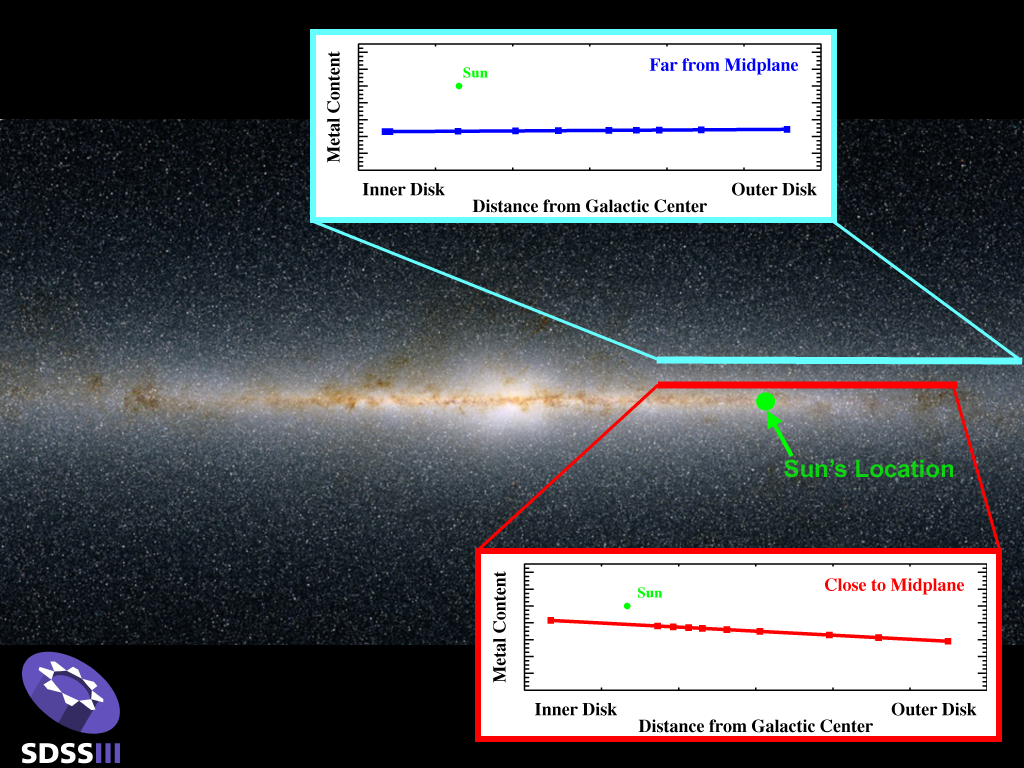Milky Way Galaxy's Past Revealed Through New Star Census

AUSTIN, Texas — Scientists are performing a census of the stars in the Milky Way in an effort to piece together the history of how our galaxy formed.
Researchers working on the Sloan Extension for Galactic Understanding and Exploration 2 (SEGUE-2) project, part of the Sloan Digital Sky Survey III, have now observed more than 118,000 ancient stars that were born back when our galaxy was a fraction of its present age.
"By studying these stars, we can learn what our galaxy was like when it was young, and how it grew and evolved," said Constance Rockosi, University of California, Santa Cruz astronomer and principal investigator of the SEGUE-2 project, during a presentation here on Monday (Jan. 9) at the 219th meeting of the American Astronomical Society.
For each of the 118,000 stars observed, the researchers measured positions, motions and chemical compositions. [Top 10 Star Mysteries]
"We put those together to try to tell the story of how the galaxy was born, and how it grew to be the way it is today," Rockosi said.
Building up metals
When the Milky Way's first stars formed, they condensed out of clouds of hydrogen and helium. Inside these stars, hydrogen and helium merged together to form the first heavy elements like carbon, nitrogen and oxygen. It was only when the most massive of these stars died in supernova explosions that some of the heavier metal elements formed and dispersed into surrounding space.
Breaking space news, the latest updates on rocket launches, skywatching events and more!
As subsequent generations of stars were born from this material, they contained higher concentrations of these heavy metals.
Thus, by studying stars' metal content (called metallicity), astronomers can tell how many generations of stars came before them.
The SEGUE-2 researchers used their metallicity findings to probe the history of a particular part of the Milky Way, called its disk. This is the relatively flat, pancake-shaped part of a spiral galaxy that contains its spiral arms.
Thin and thick disks
Many of the disk stars are restricted to a dense thin disk, though some stars stray above or below the plane in what's called the thick disk.
"The question we'd like to answer is, how did the thick disk form?" said Judy Cheng, University of California, Santa Cruz astronomer.
To address that question, the scientists measured how the disk stars' metallicities changed with their distances from the center of the galaxy. They found that in the thick disk, distance had no effect on metal content, but for stars in the thin disk, there was a gradient, with those in the inside of the galaxy containing more metal elements than those on the outside.
"This tells us the thin disk formed inside-out," Cheng said. The inside of the thin disk must have formed first, she explained, giving the center of the disk more time to accumulate metals from generation after generation of stars, while those in the newer, younger outside region were relatively metal-poor.
In contrast, the uniformity in metal content of the thick disk points to two possible formation scenarios for this part of our galaxy.
One possibility is that the thick disk formed all at once, leaving the metals spread evenly throughout it. Another alternative is that the thick disk used to have a metallicity gradient, but over time, and through a dynamic event such as an interaction with a smaller galaxy, the stars in the thick disk got stirred up.
"It either formed rapidly or it's been mixed very well," Cheng said.
You can follow SPACE.com assistant managing editor Clara Moskowitz on Twitter @ClaraMoskowitz. Follow SPACE.com for the latest in space science and exploration news on Twitter @Spacedotcom and on Facebook.

Clara Moskowitz is a science and space writer who joined the Space.com team in 2008 and served as Assistant Managing Editor from 2011 to 2013. Clara has a bachelor's degree in astronomy and physics from Wesleyan University, and a graduate certificate in science writing from the University of California, Santa Cruz. She covers everything from astronomy to human spaceflight and once aced a NASTAR suborbital spaceflight training program for space missions. Clara is currently Associate Editor of Scientific American. To see her latest project is, follow Clara on Twitter.
